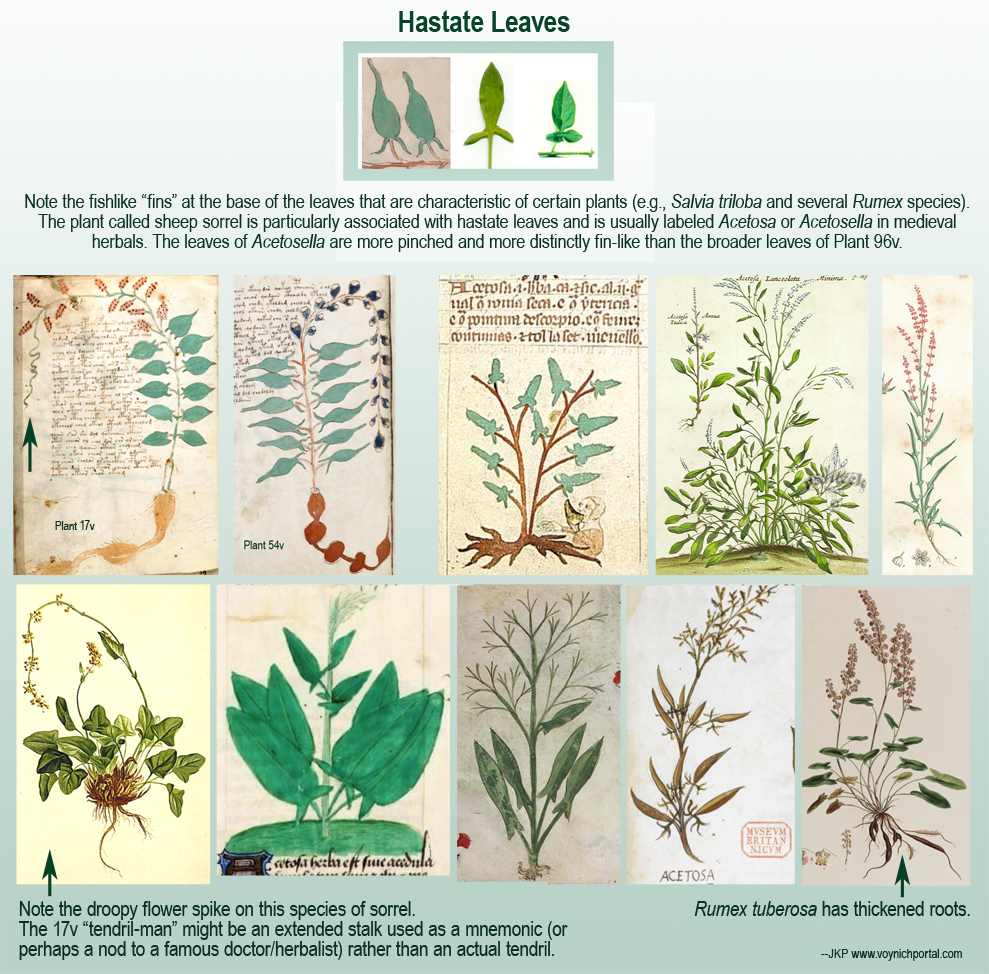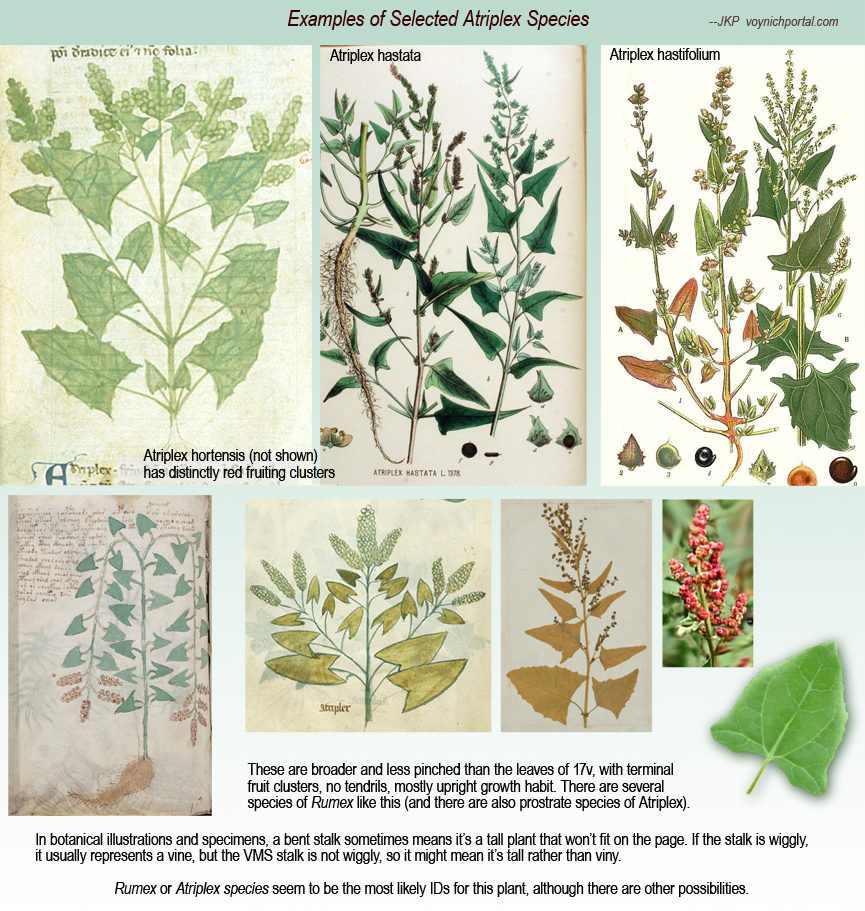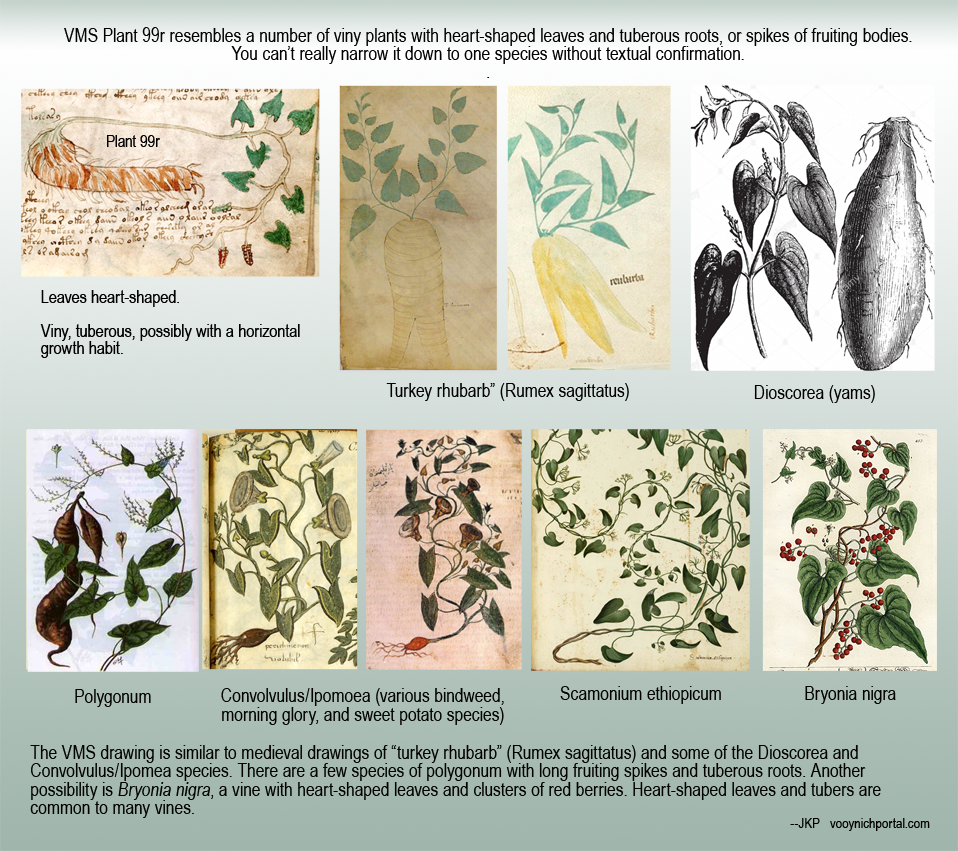In a recent Cipher Mysteries blog, Nick Pelling wrote: “I believe that most Voynich researchers would agree that – very unusually – a single plant seems to appear in three separate places in the manuscript: f17v, f96v, and f99r. “
Although I’m a fan of Nick’s blog, I don’t agree! My immediate reaction was, “No way!”
- Plant 17v has hastate leaves and more upright growth habit (possibly an upright plant or climbing vine).
- Plant 96v has sagittate leaves and is probably tall (and might be a climbing variety and might not).
- Plant 99r has heart-shaped leaves and a viny habit (possibly a semi-climbing vine that grows more horizontally than the first plant) and a differently shaped root from the first two.
This cannot be dismissed as mere differences in drawing style. Some details are defining, others are embellishments… to a botanist, these specific details are identification keys and I’m quite sure the VMS illustrator cared about the difference because the leaf margins and veins of many of the plants are carefully drawn to make the same kinds of distinctions. The various plant drawings are also specific as to whether they are solitary, viny, or clumpy. Whoever drew them knew a few things about plants.
Comparing the Three Plant Drawings
I spent months studying the VMS drawing style and how certain specific parts of the plants were differentiated before trying to identify them. Whoever drew them, especially the more naturalistic ones, cared about anatomical features. From a botanical viewpoint, these drawings represent three different leaf types and three different growth habits.
Note the way 96v is bent—it’s almost folded in half. In botanical drawings (and dried specimens), if the plant is too big to fit on the page, the illustrator will bend them to show that the plant has a long stalk. It doesn’t always mean it’s a vine, it sometimes means it’s a tall plant. Note that 96v does not have any tendrils and the stalk is not wiggly like the other two:
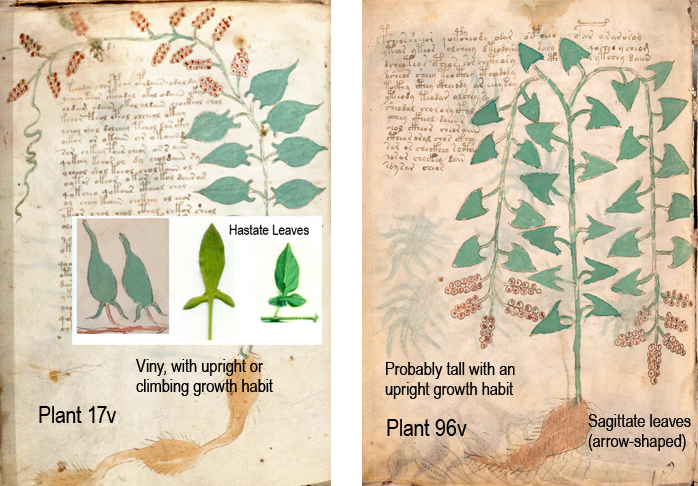
Plant 17v and 96v are superficially similar, but the plant on the left has hastate leaves, the one on the right has broader, more sagittate (arrow-shaped leaves). These distinctions are important for identification. They might be the same plant family (possibly Rumex), but it’s unlikely that they are the same species.
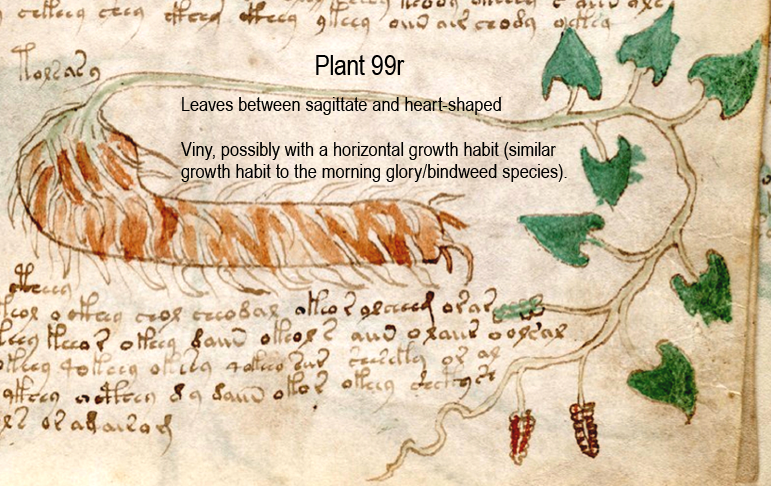
Plant 99r has heart-shaped leaves, a shape that is very common to tuberous vines. There are quite a few plants that could be represented by this drawing (see examples below), a number of which are in medieval manuscripts.
The first two examples might be from the same plant family, but probably not the same plant species. The first might be a viny plant, and the third is probably a viny plant. The second is more likely an upright plant. The first might not even be a vine—the “tendril” might not be a tendril—it might be the stalk that is extended to create a face as a mnemonic or tribute.
Visual Examples
The following chart includes botanical drawings with hastate leaves:
Now note that Plant 96v is different from 17v and 54v. It has broader, less “pinched” leaves, more sagittate than hastate (it’s probably a species of Rumex or Atriplex, although Smilax and a few other species could also be considered):
Plant 99r is different again. It is distinctly viny with heart-shaped leaves (possibly a viny Rumex, Polygonum, Bryonia, Dioscorea, or Convolvulus):
To Sum Up
I assembled these charts very quickly—grabbing examples that were on hand, due to time constraints—it’s really more of a comment response than a blog, but hopefully it’s enough to illustrate important differences that exist between the three VMS plant drawings.
There are instances of drawings in the big-plants section being duplicated in the small-plants section (I have compiled a list of them), but I think these three specific drawings are probably different species and hopefully the examples illustrate why.
J.K. Petersen
Copyright © 2018 J.K. Petersen, All Rights Reserved

